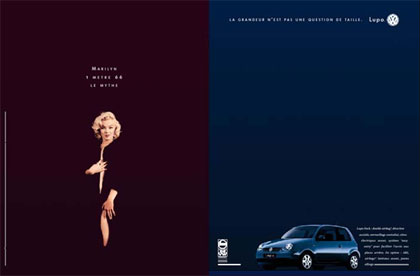1.3 International advertising strategy
1.3.1 Bases
A strategy should be seen as fundamental guideline, which determines concrete measures and a certain entrepreneurial approach. The strategy thereby forms the link between the objectives and the operational measures (Bednarczuk 1990, p7 ff.). In advertisement, a strategy is conceived to be the definition of positioning and target audience as well as the selection of an appropriate advertising execution (Farbey 2002, p30). The advertising strategy thereby always refers to a defined advertising object – in the automotive industry it refers in general to a model which has to be positioned in the context of a market launch.
1.3.2 Target audience
The starting point for considerations regarding standard programs of advertisement consists in the supposition that there are consumer groups in different countries which react similar to certain promotional campaigns. We call them crosscultural groups.
When searching crosscultural groups, it has been proved to be of value to proceed in two steps. At first, those countries are chosen, according to the regionalisation of the worldwide automotive market that can be compared in view of economic, legal, technical and social criteria (see chapter 2.2). Secondly, there is segmentation according to sociodemographic and psychographic criteria. In view of the decreasing relevance of sociodemographic characteristics for the buying behaviour, it is preferred nowadays to revert to analyses of lifestyle.
Lifestyle studies describe consumers according to psychographic characteristics such as interests, attitudes and behaviour combined with sociodemographic characteristics (Kramer 1991, p55). According to these criteria, consumers are divided into groups, which clearly differ from each other, but at the same time are highly homogenous. In case of cross-national lifestyle segmentation, consumers with a similar lifestyle, independent from their nationality, are searched. Within a Europe-wide life-style study in 15 countries, it was possible to identify 16 types of so-called „Euro-consumers“, such as:
Euro-dandy: Show-off, pleasure-seeking, always on the bright side of life,
Euro-rocky: Rocker, young outsider – grid your teeth and go for it,
Euro-moralist: bourgeois, religious, principled, but also tolerant,
Euro-citizen: responsible, the good neighbour.
These in total 16 types are more or less developed in the reviewed countries, such as the “dandy”, who is represented between 5% in the Netherlands and 9% in Portugal. Lifestyle studies show that some positionings are in principle attractive for consumers from different countries. As consumers of one group correspond in their emotions and experiences, they are susceptible to the same appeals and react similar to advertisement (Kramer 1991, p60 ff.).
The needs of the target audience have a particularly high value in international account planning, because standardised international positioning has only chances of success, if it corresponds on a cross-national basis and if the own offer is more suitable to satisfy the consumers’ needs than those of the competitors (Köhler 1993, p101).
In the automotive industry lifestyle analyses are completed by clinic studies in order to obtain already before its introduction on the market information about the needs a model responds to.
In clinic studies, owners of a vehicle are interviewed concerning their perception of a model. In this case, a prototype is in general shown in a test studio together with competitive cars. The interviewees are asked to form a configuration of preferences according to features such as price, motorisation and body design. This is based on the premise that preferences reflect the needs of the interviewees. By means of cluster analyses, groups with the same needs are formed. Each group can be described with sociodemographic and psychographic characteristics.
The explicit query for the ideal automobile can be alternatively executed. In doing so, clinic attendees are asked not only to describe the exhibited automobiles according to given features, but also to specify an imagined automobile, which they esteem as ideal. With cluster analyses it is possible to consolidate people with similar ideal conceptions in groups, which can also be described according to their sociodemographic and psychographic characteristics. A clinic study for the Volkswagen Lupo for example showed that the ideal automobile of this class (Ideal 1) should be up-to-date and intelligent but also trendy and flamboyant (see fig. 9). The group that represents these ideal conceptions consisted of young people with a high level of education, whose needs lie in an extroverted, leisure- and fashion-oriented lifestyle.

Figure 9: Positioning model for the German compact car market (Source: Volkswagen AG).
The result of this positioning model was an advertising campaign which was standardised in its key elements („pattern standardisation“) and that had the motto „You don’t have to be big to be great“
(see fig. 10 and 13).

Figure 10: Internationally standardised advertisement of the Volkswagen Lupo (Source: Volkswagen AG).
Further Chapters
- Standardised international account planning
- International analysis of the initial situation
- International advertising strategy
- International advertising budget planning
- International planning of advertising design
- International media planning
- International advertising control
- The implementation of international
